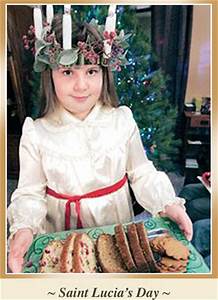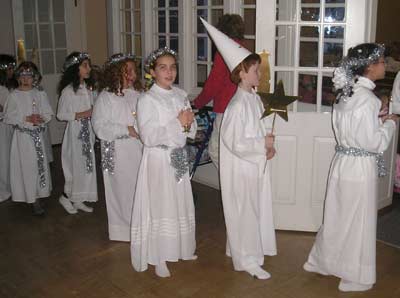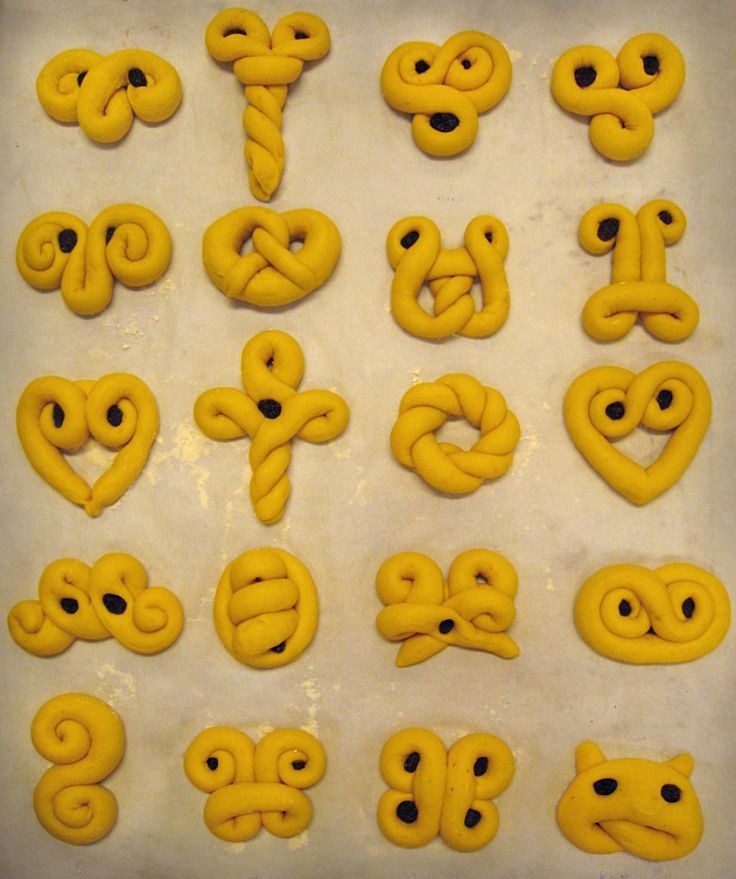Saint Lucia’s Day

December 13th is the feast day of St. Lucia, an Italian saint whose name means light, which may be why her celebration has been embraced so thoroughly by the people of Scandinavia. Lucia, who’s name means “light” was a traditional early virgin martyr who’s eyes were gouged out before she was killed, and she is often shown carrying them on a platter. As a light-bringer she was well received in Scandinavia where days can get as short as five hours near Solstice (a week after her feast day).
There is a tradition that parents are brought breakfast in bed by the youngest or oldest (this varies, probably depending on age and whether she can safely carry the pot of hot coffee) girl wearing a white dress with a red sash and a wreath with lighted candles on her head, representing Saint Lucia.
My husband created a wreath for our daughters (we used the youngest rule, so the honor would circulate, and they got it when they could carry the tray) with electric candles and a battery pack. I’m sure that is done in many other homes and churches as well. Frankly in an outdoor parade, it would have less likelihood of blowing out, which would seem a bad omen. (not quite so bad as tripping and setting herself on fire, I suppose).
Towns in Sweden and Norway have Lucia parades where one (the most popular) girl is chosen to play the Light Bringing saint and the other girls wear wreaths without candles (boys get to wear cone shaped hats with stars).

I cannot let the day pass without mentioning Lucia Buns. These are sweet bread rolls, flavored with saffron, and they come in shapes which suggest many symbols that pagans and Christians will recognize and embrace: Solar Crosses, Goats, Pigs, Cats, Horses, Wagons, Priests Hair, Lucia’s Crown, Baby, Lyre, Wagon, little boys and little girls, and many others.
I include my recipe below:


LUCIA BUNS RECIPE
shapes are called lussekatter, Julgalt, Gulluagn, Praestens
Har, Luciakroona, Pojkar and Lilja–
Note: Saffron is small red threads- the stamens of the saffron crocus, and is not the same as safflower (often used in Spanish cooking); both make food yellow, but have totally different flavors.
Proof: 2 tbsp. yeast in 1/2 cup warm water
dissolve: 1 tsp. saffron in 2 tsp. boiling water
scald : 1 1/2 cups milk, let cool
stir: 1/2 cup of honey & 1/2 cup butter into the milk,
it will melt the butter and help cool the milk., then add the saffron.
When the yeast is foamy, and the milk cooled, pour it into
5 cups bread (or AP) flour
and 1 tsp. salt
stir in: 2 beaten eggs and
about 2 more cups flour to make a soft dough.
Knead well, cover and let rise in a warm place until double. Punch down and knead again. Divide into about two dozen pieces. Roll into snakes then coil these up into tight Ss. (which look to some like sleeping cats- but feel free to form into any shapes you like!) Decorate with raisins, and let rise, covered, about a half hour. Bake. For the last five minutes, brush with
an egg yolk beaten into a tablespoon of water to glaze.
baking time: 20-25 minutes. temp.: 400 degrees yield: 2-4 dozen depending on size
